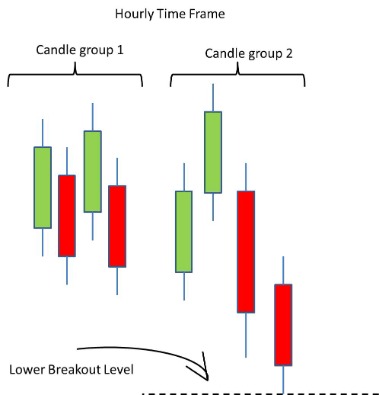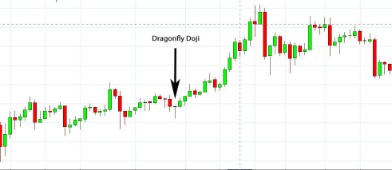Dove & Hawk Monetary Policy Explained
Garota de Programa Ribeirão Preto - SP
Perfil
- Cidade: Ribeirão Preto - SP
- Eu Sou:
Apresentação:

By making borrowing cheaper and more accessible, dovish monetary policy encourages businesses to expand and invest, leading to job creation and increased consumer spending. Additionally, low-interest rates can help to reduce the overall cost of living, giving households more disposable income. When the home currency strengthens, the prices of imported foreign goods become relatively cheaper, hurting domestic producers. At the same time, domestic exports become relatively more expensive for overseas consumers, further hurting domestic manufacturing. The opposite of a hawk is known as a dove, or an economic policy advisor who prefers monetary policies that involve low interest rates. Doves typically believe that lower rates will stimulate the economy, leading to an increase in employment.
A Map of Inflation Around The World Explains the Fed’s Less … – Investopedia
A Map of Inflation Around The World Explains the Fed’s Less ….
Posted: Sun, 25 Jun 2023 07:00:00 GMT [source]
The Hawkish stance differs from dovish in that Hawkish is concerned with consumer price inflation, while Dovish focuses on economic growth. A “hawk” refers to an economist who focuses on curbing or preventing inflation, typically through interest rates. A hawk is very concerned with the negative effects of inflation, so they advocate for higher interest rates to slow down the rise in price levels. To understand if a central bank is hawkish or dovish…or neither, you have to read their public statements.
Introduction to Hawkish and Dovish Monetary Policy
George favors raising interest rates and fears the potential price bubbles that accompany inflation. Higher interest rates can become deflationary, making prices cheaper. While this can be a short-term positive, deflation can often be worse than moderate inflation in the long run. Persistent deflation means that a dollar tomorrow will be worth more than one today, and worth even more in a week or a month.
- In this post, I’ll give you the trader’s definition of both hawkish and dovish, and show you two easy mnemonics that you can use to remember them in the future.
- To learn about how you can be profitable in a hawkish vs dovish environment, Simpler trading has created a trader profile survey that will help you determine what type of trader you are.
- Animals have been used times without number as a signifier of various economics concepts, Hawks used to represent financial advisors who is concerned with high-interest rates.
- At DailyFX we have a Central Bank Weekly Webinar where we analyze central bank decisions and keep you up to date with central bank activity.
- For instance, the Federal Reserve Bank may use dovish language to describe inflation.
- In short, Hawkish policies are often used when there is evidence of increased interest rates and higher than normal levels of consumer prices.
In contrast, low interest rates entice consumers into taking out loans for cars, houses, and other goods. Janet Yellen, Fed chief from 2014 to 2018, was generally seen as a dove who was committed to maintaining low lending rates. Jerome Powell, named to the post in 2018, was rated as neutral (neither hawkish nor dovish) by the Bloomberg Intelligence Fed Spectrometer. Loretta Mester, the Cleveland Fed president, also fits into this category.
How does it affect the markets?
One major effect of an expanding economy is more jobs and less unemployment. However, an expanding economy also tends to lead to higher prices and wages. This can create an inflationary spiral that, especially if prices are rising faster than wages, can lead to less rather than more demand. When interest rates are lower, it makes it less costly for consumers to borrow to purchase goods and services.
Currencies tend to move the most when central bankers shift tones from dovish to hawkish or vice versa. Hawkish and dovish policies affect currency rates through a mechanism central bankers like to call “forward guidance”. This is policy makers trying to be as transparent as possible in their communications to the market about where monetary policy may be heading. You have probably heard a financial news presenter say something along the lines of “The central bank governor came out slightly hawkish today after bouts of strong economic data”. The terms Hawkish and Dovish refer to whether central banks are more likely to tighten (hawkish) or accommodate (dovish) their monetary policy. Hawkish refers to when a central bank’s policymakers talk about raising interest rates, slowing down economic growth, or even easing up on inflationary pressures.
- The interest rates also apply to other depository institutions that give loans.
- Hawkish Vs Dovish are two words you hear a lot in the world of finance, but what do they mean?
- Note that the rates set by the Feds group do not necessarily dictate the interest rate the banks are supposed to charge their clients.
- RISK DISCLOSURETrading forex on margin carries a high level of risk and may not be suitable for all investors.
This tends to increase demand, motivating businesses to invest in hiring more workers and expanding their production facilities. Lower borrowing costs also makes it less costly for businesses to take out loans to support their expansions. Government monetary policy was strongly dovish https://g-markets.net/ in the wake of the 2008 financial crisis, as policymakers kept interest rates close to zero for several years. About 2015 policymakers turned somewhat more hawkish and began raising rates, partly in order to have room to lower them in the event of another economic downturn.
Background to U.S. Monetary Policy
Central bankers can be said to be hawkish if they talk about tightening monetary policy by increasing interest rates or reducing the central bank’s balance sheet. A monetary policy stance is said to be hawkish if it forecasts future interest rate increases. Central bankers can also be said to be hawkish when they are positive about the economic growth outlook and expect inflation to increase. When a central bank is described as “hawkish,” it means that they have a more aggressive stance towards inflation and are more likely to raise interest rates and tighten monetary policy. Whether you’re a seasoned trader or just starting, understanding these terms and their implications can be the key to unlocking the potential of your investments. As a group, government monetary policymakers tend to turn hawkish and dovish in response to economic cycles.
We’re also a community of traders that support each other on our daily trading journey. Being “hawkish” refers to the tone of language when describing an aggressive hawkish definition finance stance or viewpoint regarding a specific economic event or action. If you were confused between hawkish and dovish before, I hope that this post cleared things up.
Pros and Cons of Hawkish Policy
A hawkish central banker, on the other hand, is more likely to raise interest rates in order to combat inflation. When it comes to monetary policy, hawks and doves often find themselves at odds. A dove is an economic policy advisor who promotes monetary policies that usually involve low-interest rates. Doves tend to support low-interest rates and an expansionary monetary policy because they value indicators like low unemployment over keeping inflation low.
BHPs economic and commodity outlook – BHP
BHPs economic and commodity outlook.
Posted: Tue, 22 Aug 2023 07:00:00 GMT [source]
As consumers and businesses spend less money, the economy will grow more slowly or could even contract. This results in prices of goods and services stabilizing, which halts inflation. Due to a high rate of consumption, there is the creation of job opportunities.
In other words, Hawks view inflation as a top priority and high-interest rates as a check for inflation. Unlike hawks, a dovish monetary policy is typically focused on stimulating growth of the economy by making money more available. This is done by reducing the interest rate, and increasing the monetary supply.
Hawkish vs Dovish Explained
Deflation is when prices for goods and services go down, which means that every dollar will be worth more than before – a phenomenon commonly seen during recessions or depressions. These policies are based on their outlook for the economy and what they believe will happen next. The Fed was designed to be independent to politics and as such, a governor at the Federal Reserve is allowed up to a 14-year term. This is longer than any presidential term, so governors typically will remain at the Fed for multiple presidencies. An example of a hawkish economist is the Kansas City Federal Reserve’s President and CEO, Esther George.
This spurs spending by encouraging people and companies to purchase in the present while rates are low rather than deferring the purchase for the future, when rates might be higher. Increased consumption can help create or support jobs, which is often one of the main concerns of the political system from both a taxation and a happy voter perspective. Likewise, if a central bank is currently cutting rates and economic data hasbeen negative, the market would have priced-in the current dovish monetary stance.
For example, in the United States, the central bank is the Federal Reserve. The central bank interest rate determines the rate at which other banks like Chase can borrow from the Federal Reserve. At this point, you may be wondering where central bank interest rates fit into the overall picture of a nation’s economy.

In a dovish environment, traders may see an expansion of the economic cycle, leading to a bull-market. Eventually, however, the aggregate demand leads to increases in price levels. When this happens, workers tend to earn relatively higher wages as the supply of available workers goes down in a hot economy. Adding to this are macroeconomic factors created by an expanding money and credit supply where the value of the dollar is going down because they are plentiful.
How are interest rates determined?
This makes the input costs for products dependent on supply chains in another currency more expensive in dollars. Left unchecked, inflation can be as destructive as high unemployment in a stagnant economy. The two terms are often used to describe board members of the Federal Reserve System, especially the 12 people who make up the Federal Open Market Committee (FOMC). The Fed officials are generally made up of a mix of hawks and doves. One of the more dovish members of the Fed is Neel Kashkari, president of the Minneapolis regional Federal Reserve branch.

